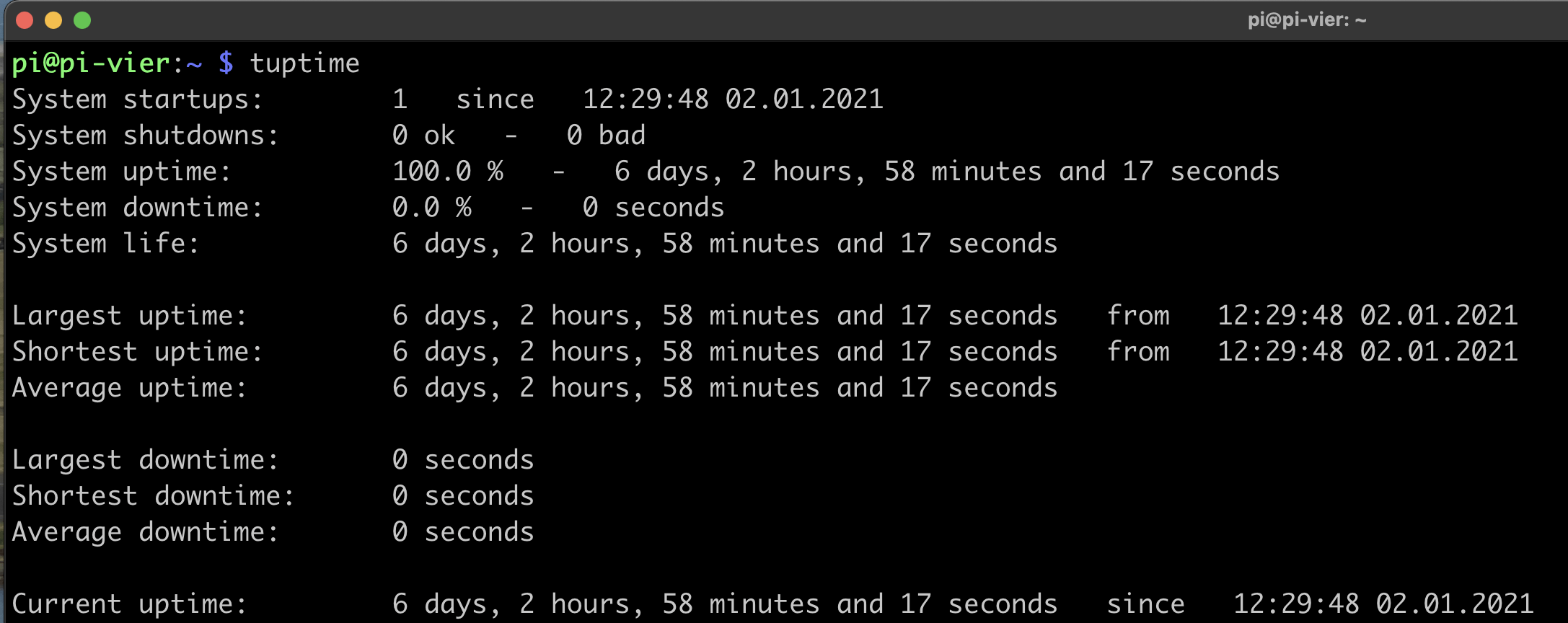Auf Linux und dem Raspberry Pi verwendet man meist uptime.

Mit uptime können die Zeiten ausgegeben werden, wie lange das System ununterbrochen läuft. Bei Linux meist Monate oder Jahre, bei Windows … Tage …
Wer mehr braucht, kann mit sudo install tuptime mal tuptime installieren und aufrufen:
Hier die Anleitung und Optionen:
|
1 2 3 4 5 6 7 8 9 10 11 12 13 14 15 16 17 18 19 20 21 22 23 24 25 26 27 28 29 30 31 32 |
tuptime -h usage: tuptime [-h] [-c] [-d DATE_FORMAT] [--decp DECIMALS] [-f FILE] [-g] [-k] [-l] [-n] [-o TYPE] [-r] [-s] [-S SINCE] [-t] [--tsince TIMESTAMP] [--tuntil TIMESTAMP] [-U UNTIL] [-v] [-V] [-x] optional arguments: -h, --help show this help message and exit -c, --csv csv output -d DATE_FORMAT, --date DATE_FORMAT date format output --decp DECIMALS number of decimals in percentages -f FILE, --filedb FILE database file -g, --graceful register a graceful shutdown -k, --kernel print kernel information -l, --list enumerate system life as list -n, --noup avoid update values -o TYPE, --order TYPE order enumerate by [<e|d|k|u>] -r, --reverse reverse order -s, --seconds output time in seconds and epoch -S SINCE, --since SINCE restrict since this register number -t, --table enumerate system life as table --tsince TIMESTAMP restrict since this epoch timestamp --tuntil TIMESTAMP restrict until this epoch timestamp -U UNTIL, --until UNTIL restrict until this register number -v, --verbose verbose output -V, --version show version -x, --silent update values into db without output |
Oder:
|
1 2 3 |
tuptime -l Startup: 1 at 12:29:48 02.01.2021 Uptime: 6 days, 4 hours, 24 minutes and 20 seconds |


